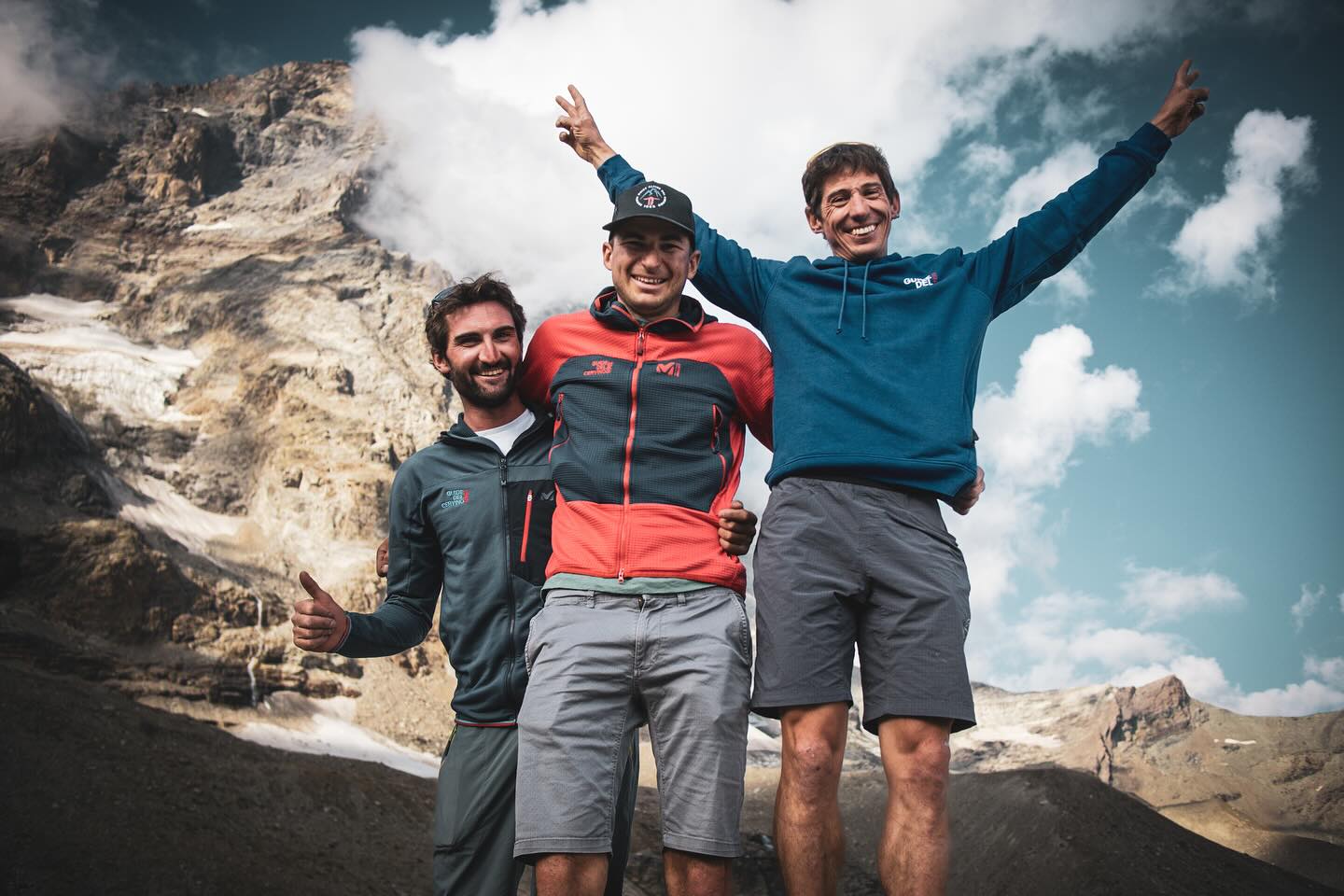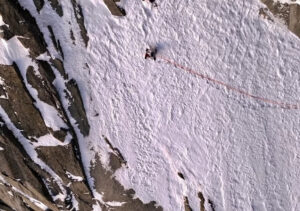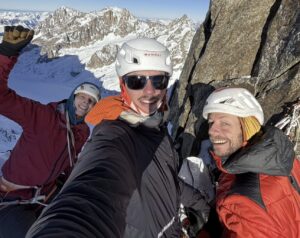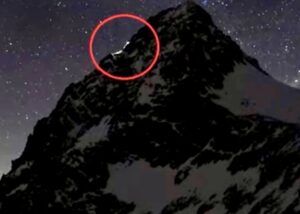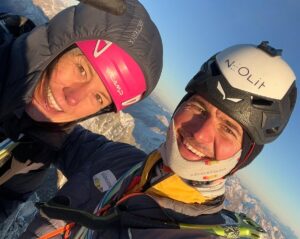Despite more than a century and a half of climbing history, even the most popular peaks in the Alps have some potential new lines. Two of those elusive firsts recently fell to determined seekers.
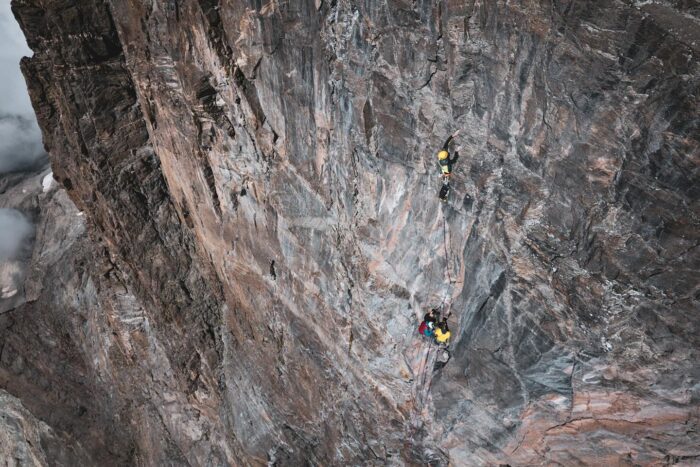
On the new Cervino route. Photo: Francois Cazzanelli
The Infinite Knot
There’s hardly a more legendary peak than the Matterhorn, topped out for the first time 160 years ago.
Francois Cazzanelli and two of his cousins, Michelle Cazzanelli and Stefano Stradelli, have just opened a new line on the south face of the iconic Matterhorn, known as Cervino on the Italian side. The threesome, following the family tradition as Cervino guides, opened the route in three days (August 8-10). They called their line Il Nodo Infinito (The Infinite Knot), referring to the Buddhist symbol representing the interconnection of all things.
The Society of Cervino Mountain Guides was founded the same year Edward Whymper and his team first climbed the mountain. “Many years have passed, but the spirit with which the Guides live on this mountain has remained unchanged, and we hope it will remain so for generations,” the climbers said.
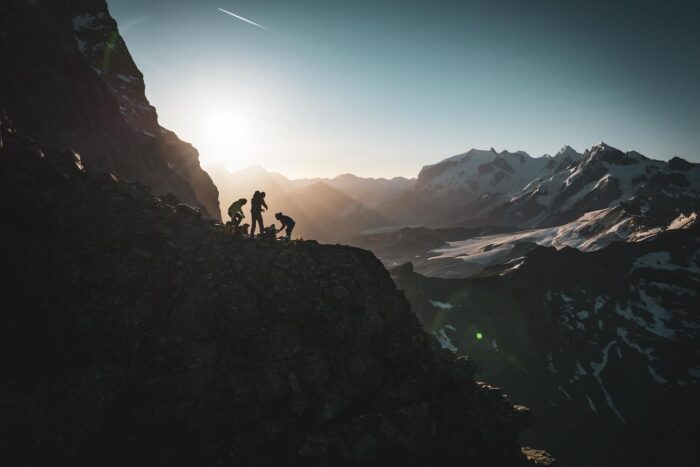
The Cazzanellis on the top of Pic Tyndall, on the south face of Cervino/Matterhorn. Photo: Francois Cazzanelli/Facebook
Brenva line
Three weeks ago, another team of Italian guides opened a new line in the equally legendary Mont Blanc massif. Carlo Filippi, Isaie Maquignaz, and Francesco Ratti climbed their route on the southeast face of the Aiguille de la Brenva (3,278m), on the Italian side of Mont Blanc. They managed to get two days off work as guides (it’s peak season in the Alps) to explore a route that has good rock, is uncrowded, and “a bit wild.”
Coincidentally, the route is the same length and difficulty as the Cazzanellis’ line on the Matterhorn (460m, 7b max). As with the Cervino route, alternatives can reduce the difficulty to 6c.
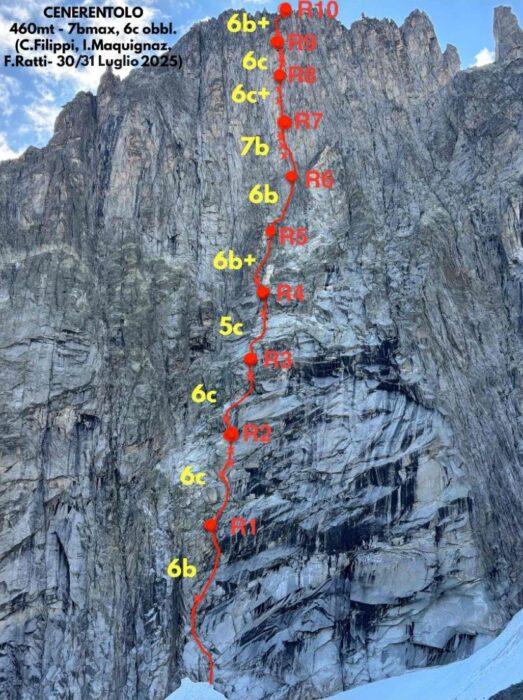
Topo of ‘Cenerentolo’, the new route on the Mont Blanc massif. Photo: Francesco Ratti
Ratti noted that, although the Aiguille de la Brenva is easy to reach — it’s a two-hour walk from the intermediate station of the Mont Blanc Skyway — very few routes have been opened there in the last 20 years.
“On the section of the face we focused on, you mainly find classical climbing routes, opened in the 1940s and 1950s,” Ratti pointed out. “The only modern route, which is a bit further left than [ours], is Via Mares, opened in 2002 by Alex Busca, Massimo Farina, and Erman Tussidor.”
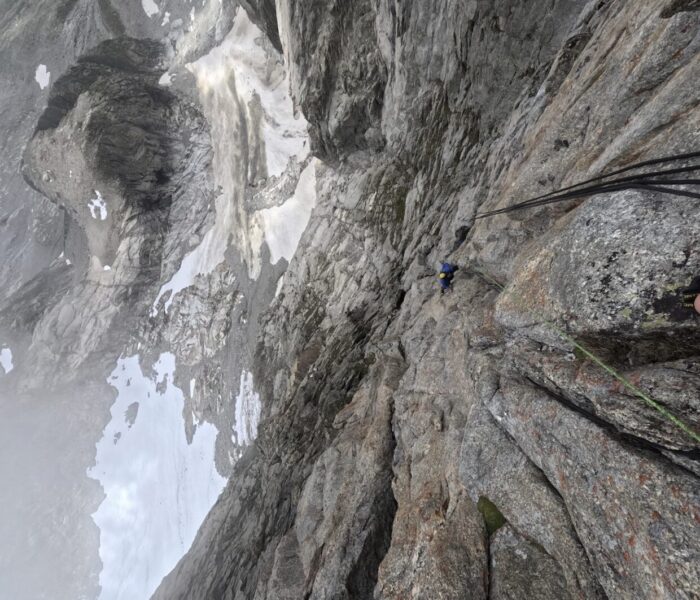
On the dizzying southeast face of Aiguille de la Brenva. Photo: Francesco Ratti
The climb
The climbers decided on their line the evening before setting off, from a bivouac at the base of the face. Some summer snow flurries had hit the area in previous days, so they needed to make sure conditions on the face were suitable.
On July 30, they opened the first six pitches, a total of 300m, to the steepest part, the base of the final headwall. They then rappelled to the bottom, fixing the most difficult pitches. At dawn the following day, they climbed the first 300m again, then prepared to tackle the final pitches.

On the summit. Photo Francesco Ratti
Ratti opened the hardest pitch (7b) in about two hours. He was not sure they could summit by the end of the day. Fortunately, the last three pitches took less time than expected. Around 4 pm, the three of them stepped onto the summit.
“We tried to place as few bolts as possible and to use quick protections,” Ratti said. “On average, there are fewer than two bolts per pitch.”
He invited other teams to repeat the route in a single go. They couldn’t, as they had to get back to work. “It’s a rock-climbing route that requires intuition and good skills in using quick protections,” said Ratti.
